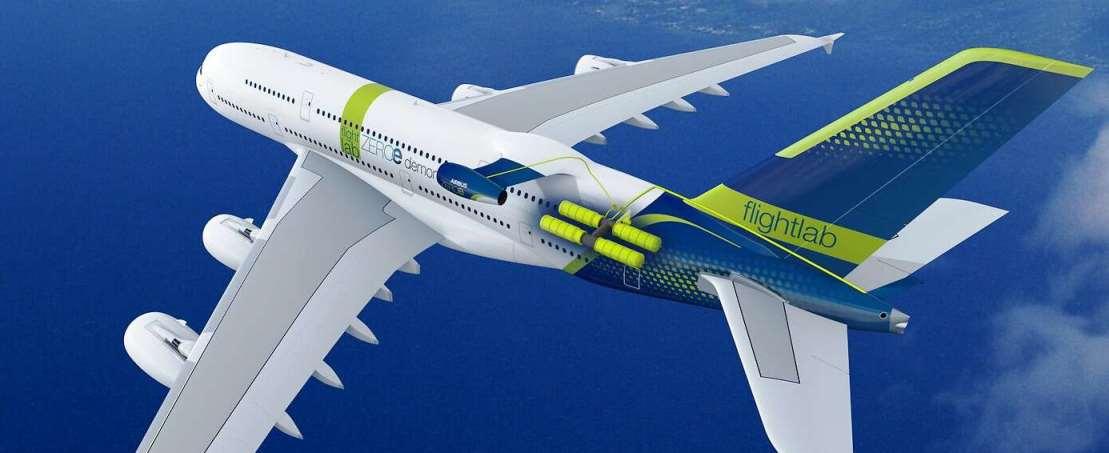
Airbus and CFM plan to test a turbofan modified to burn hydrogen on an A380.
Identifying direct hydrogen combustion in turbine engines as the preferred way to decarbonize short- and medium-range commercial aviation, Europe’s Clean Hydrogen Partnership program is inviting bids to demonstrate the required combustion technologies.
Burning hydrogen in turbofans would eliminate CO2 emissions but could increase production of nitrogen oxides (NOx) over engines burning jet fuel. Increased NOx emissions would have an adverse effect on climate and local air quality and could endanger acceptance of hydrogen combustion as a means of decarbonization, the Clean Hydrogen Joint Undertaking says.
In its first call for proposals in 2023, Clean Hydrogen is seeking bids to develop an ultra-low NOx combustion system for aviation. With a maximum of €8 million ($8.6 million) in European Union funding available, the project is intended to support a plan by Europe’s Clean Aviation research program to flight test a turbofan engine adapted to burn 100% hydrogen.
Hydrogen combustion generates more NOx than burning jet fuel because of higher flame temperatures and the higher reactivity of hydrogen when burned in air. NOx contributes to climate change by the formation of ozone and destruction of methane, with a dominant warming effect.
In Phase 1 of Clean Aviation, an existing turbofan is to be adapted to operate on hydrogen and ground tested to demonstrate full system feasibility, from the liquid hydrogen tank, through the fuel and control system to the adapted combustor.
Successful ground tests are a prerequisite for a flight test demonstration planned for the beginning of Phase 2 of Clean Aviation. This is intended to include inflight measurement of contrails produced by a turbofan burning 100% hydrogen.
Because of the “very tight schedule” in Phase 1 of Clean Aviation, “only limited effort can be put into development of low-NOx combustion technology,” Clean Hydrogen says, adding there will not be enough time in Phase 2 to develop the technology to the readiness level (TRL) necessary to move into product development at the end of the program.
As a result, the Clean Hydrogen program plans to develop the ultra-low NOx combustion technology up to TRL 4 so that it can be matured to TRL 6 in Phase 2 of Clean Aviation. The ultimate goal is to support Airbus’ ZEROe project to develop a hydrogen-fueled airliner for entry into service by 2035.
A key requirement for the hydrogen combustion system is to enable NOx emission as least as low as current turbofans, which are around 50% below regulations now in force, with the potential to reduce emissions by at least another 30%.
Clean Hydrogen says technical challenges include developing a fuel injection system that provides homogeneous fuel/air distribution, reliable and safe ignition and flame stabilization without autoignition and flashback. Preventing overheating and controlling NOX production across typical aeroengine operating ranges are requirements.
The project is planned to include both single-cup and multi-cup sector combustor tests with optical, thermoacoustic and emission measurements up to relevant operating pressures and temperatures. Proposals are to be submitted by mid-April.
